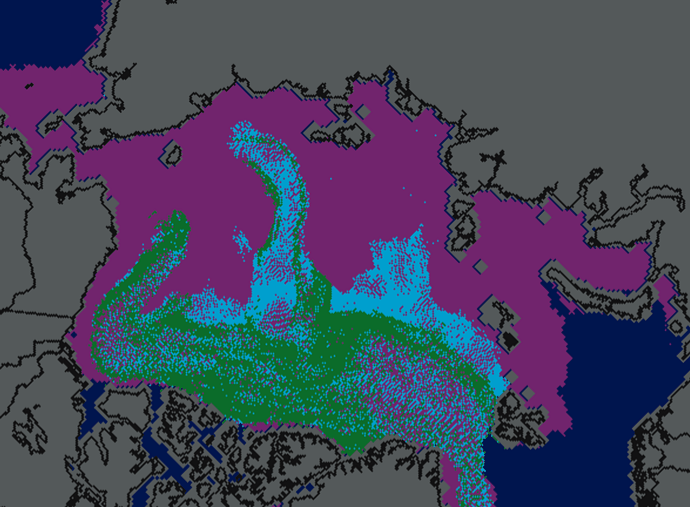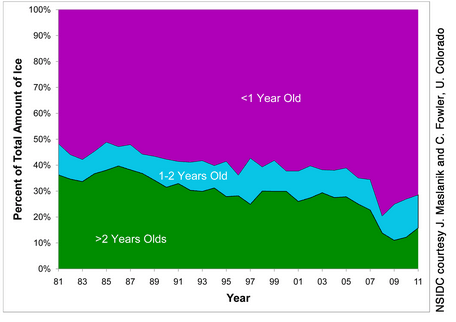
The US Navy forecasts little ice loss over the next week in the western Arctic, which is where the vast majority of multi-year ice is located. The map above is NSIDC’s March MYI map.
Multi-year ice has been increasing since 2008, and appears likely to do so again this year.
http://nsidc.org/images/arcticseaicenews/20110405_Figure5.png



were doomed….more multi-year ice…the horror…/sarc
Steve, are you ready to make a forecast for the September min?
No. I have made it quite clear that I am not going to play that idiotic game. I have no idea what the wind will do over the next six weeks.
If the wind scatters the ice, we’re in deep doodoo….
..the satellites can’t figure out the difference between ice and water
Well, of course multi-year ice is up, but it’s not multi-year enough. In 2020, when IWB is jet-skiing to the pole in a leather bikini then you’ll see! & you’ll never be able to unsee, either.
Frightening thought! I must now sue you for causing nightmares! 😉
More modeling divergence mayhem! Real world observations once again rain on the “death spiral” parade.
Atmospheric reanalyses can be useful tools for examining climate variability and change; however, they must be used cautiously because of time-varying biases that can induce artificial trends. This study explicitly documents a discontinuity in the 40-yr European Centre for Medium-Range Weather Forecasts (ECMWF) Re-Analysis (ERA-40) that leads to significantly exaggerated warming in the Arctic mid- to lower troposphere, and demonstrates that the continuing use of ERA-40 to study Arctic temperature trends is problematic. The discontinuity occurs in 1997 in response to refined processing of satellite radiances prior to their assimilation into the reanalysis model. It is clearly apparent in comparisons of ERA-40 output against satellite-derived air temperatures, in situ observations, and alternative reanalyses. Decadal or multidecadal Arctic temperature trends calculated over periods that include 1997 are highly inaccurate, particularly below 600 hPa. It is shown that ERA-40 is poorly suited to studying Arctic temperature trends and their vertical profile, and conclusions based upon them must be viewed with extreme caution. Consequently, its future use for this purpose is discouraged. In the context of the wider scientific debate on the suitability of reanalyses for trend analyses, the results show that a series of alternative reanalyses are in broad-scale agreement with observations. Thus, the authors encourage their discerning use instead of ERA-40 for examining Arctic climate change while also reaffirming the importance of verifying reanalyses with observations whenever possible.
http://journals.ametsoc.org/doi/abs/10.1175/2010JCLI4054.1?journalCode=clim
Now that’s got to have hurt a bunch of Chicken Little folks.
We are only about 6 weeks from the minimum now right?